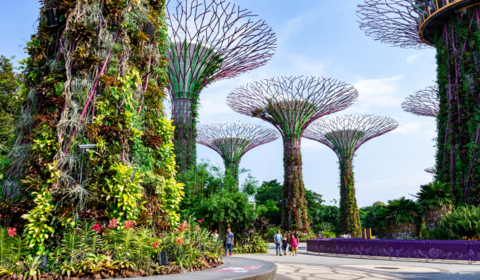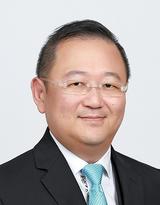
ENERGISING THE LION CITY: SINGAPORE’S GREEN REVOLUTION
Transitioning Towards A Net Zero World
At the recently concluded Singapore International Energy Week 2023, industry experts called on stakeholders and policymakers to collaborate and rethink net-zero targets to make it possible for the 1.5°C target to remain within reach.
Singapore is committed to this global decarbonisation effort and have set a target of getting to net zero by 2050. Getting the power sector to net zero will be a key thrust of this endeavour as power generation contributes to about 40% of Singapore’s carbon emissions.
An already complex attempt for many countries around the world, it is an even bigger challenge for Singapore. Unlike other countries, Singapore is a country with land scarcity and no natural resources. There is no land for large solar farms, nor the potential for wind power. There is also no fast flowing rivers for hydro-electric power. In short, there are limited options to deploy renewable energy at scale.
It Starts With Energy Security
To get to net zero, it is critical that we have a stable and secure power system to prevent energy shortages and volatile electricity prices as these can quickly undermine any decarbonisation efforts.
Singapore previously announced plans to import up to 4GW of low-carbon electricity by 2035 as part of its ambition to decarbonise its energy supply. To that effect, there have been a series of announcements by the Government on the importing of low carbon electricity into Singapore. A conditional approval was given earlier this year for 3GW import of low carbon electricity from Indonesia and Cambodia, and another 1.2GW of import was granted from Vietnam a few weeks ago. These electricity imports will tap into a mix of solar energy, wind power and hydropower.
As Singapore lacks renewable energy sources, importing energy allows the country to access cleaner sources from abroad. This cross-border electricity trade, which is akin to the establishment of an ASEAN Power Grid (APG) albeit on a smaller scale, can also accelerate renewable energy development in the region and facilitate economic growth while diversifying energy sources away from fossil fuels.
Singapore will also be investing in promising low-carbon alternatives including those that may be less technologically mature today but demonstrate great potential. One such example is hydrogen.
Developing The Energy Infrastructure
ASEAN’s vision is to integrate the national power systems of its 10 member states to enable power trade. Citing estimates of a 2010 study, the ASEAN Centre for Energy says enhanced integration through the APG could “avoid adding 154 MW of capacity, saving $1.87 billion, by 2025”.
Building the APG, however, is a major undertaking that entails the development of hard and soft infrastructure, including transmission facilities and electricity trading mechanisms.
In many ways, the APG is trying to mirror the success of electricity trading markets in the European Union (EU). There are many reasons for the success of the EU Grid, many of which involved the harmonising of regulatory differences and allowing market integration such as breaking down the barriers of trade to promote competition and efficiency.
However, it is important to note that infrastructure in the EU market is the main factor to have contributed to its success.
- Cross-Border Interconnections: Expanding and improving cross-border electricity and gas interconnections between member states is essential for facilitating energy flows and promoting energy security. These interconnections reduce the risk of energy shortages and increase market competition.
- Renewable Energy Integration: The EU has prioritised the integration of renewable energy sources into its markets. Support mechanisms such as feed-in tariffs and renewable energy certificates have promoted the growth of clean energy sources.
- Grid Infrastructure Development: Investment in grid infrastructure is vital for transporting energy across regions and connecting renewable energy sources to the grid. The EU has supported various infrastructure projects through initiatives like the Connecting Europe Facility (CEF).
- Energy Efficiency Measures: The EU has implemented various energy efficiency measures, such as energy labeling and efficiency standards, to reduce energy consumption and costs.
The increasing energy demand over the next decade will require joint efforts within the ASEAN region beyond the targets set by individual nations. Beyond deploying policy instruments, it is evident that the process of coordinating energy resources and infrastructure across South East Asia will face its own technical challenges to ensure the successful deployment of the APG.
These include:
- Infrastructure Development: Building the necessary infrastructure, including high-voltage transmission lines and substations, to facilitate cross-border electricity trade is capital-intensive and may require significant investment.
- Energy Resource Inequality: Some countries in the region have abundant energy resources, while others are resource deficient. Balancing the distribution of energy resources and the costs of infrastructure development can be challenging.
- Environmental Impact: Balancing the use of clean energy sources, such as hydropower and renewables, with the potential environmental and social impacts of large-scale energy projects can be a contentious issue.
- Technical Compatibility: Ensuring the technical compatibility of electricity grids and frequencies across different countries is essential for the efficient transfer of electricity.
- Intermittent Renewable Energy Integration: Integrating intermittent renewable energy sources into the regional grid, such as solar and wind power, requires advanced grid management and energy storage solutions.
- Technical Losses: Reducing technical losses in electricity transmission and distribution can improve the efficiency of the grid.
The Pathway To Success
Taking a leaf out of the EU Power Grid success playbook, Bureau Veritas is able to play a part in expediting the realisation of a future ASEAN Power Grid.
- Transmission Network Services: For transmission systems (High Voltage Direct Current and High Voltage power lines, sub stations and interconnectors), Bureau Veritas will be able to support across all project stages from feasibility, design and permitting, procurement, construction and operation. These include project management assistance, construction supervision, onsite QA/QC and third-party inspection of critical equipment at source.
- Domain knowledge of Distribution Network: Bureau Veritas is present in 140 countries and familiar with many of the local regulatory framework requirements and license to operate. Being close to the clients gives us the advantage of being able to provide relevant expertise to advise on the connection or disconnection services, investigate the possible technical or non-technical causes for loss reduction and help maximise the performance to meet local standards of safety and compliance.
- Maritime Expertise: High voltage subsea power cables are among the most critical elements of the network. Reliability of high voltage power cables end-to-end solutions, including installation, becomes an essential enabler for the current and the next generation of cables required to transfer the electricity in deeper waters. Bureau Veritas‘s maritime expertise and experience in risk management in subsea connections will help to mitigate any risks related to installation and promote best practices for such projects.
- Battery Energy Storage System Integration: Safety, quality and performance are paramount when developing and operating BESS installations, whether they are standalone or integrated with renewable generating resources. Bureau Veritas can support BESS integration from its origination, design review, permitting, procurement, construction, and subsequent operation management. This ensures that asset deployment is completed on time and to-budget, and that assets remain reliable and safe over their operational lifetime.
The Future Is Bright And Clean!
As we prepare for a new energy future where low-carbon energy sources are deployed at scale, it is worth reminding that all of us – governments, businesses, individuals - must work together.
The Government will need to establish sound policies and market frameworks to drive the domestic decarbonisation agenda; businesses will need to develop commercially viable low-carbon solutions and shorten the time to market; more importantly, all of us, as individuals, will need to make lifestyle adjustments and reduce energy consumption.
Being one of the world’s leading economies, Singapore's energy transition journey towards low carbon electricity is a global inspiration. With a clear vision, ambitious targets, and a commitment to sustainable development, the Lion City has taken a committed approach to lighting the path to a greener, more sustainable future that combines economic growth with environmental stewardship.
In this way, not only will we build a low-carbon energy system, we’re also paving the way for an accessible and affordable one.
Country Chief Executive
Bureau Veritas Singapore
With a clear vision, ambitious targets and a commitment to sustainable development, Singapore is headed towards a greener future that combines economic growth with environmental stewardship.
